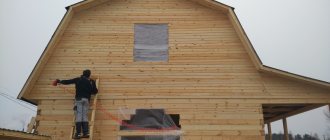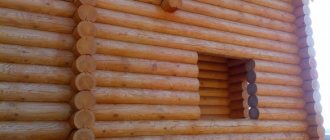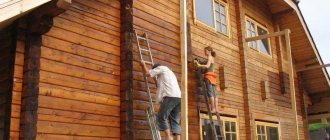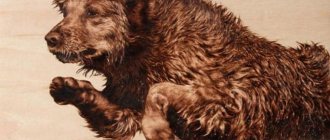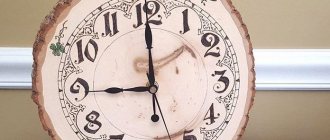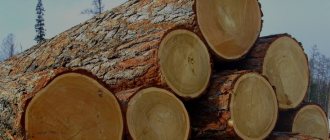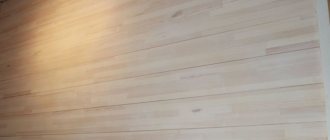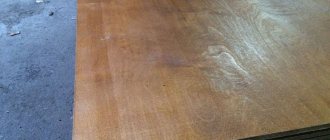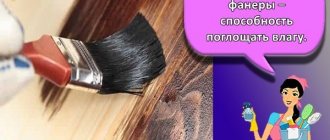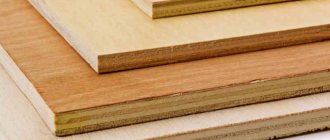Plywood is considered a popular material for decoration, as well as for furniture production. Demand for it is growing due to its low cost, and the material itself consists of several thin sheets of veneer glued together. When carrying out repair work, painting of plywood is often required: in order to do this efficiently, you need to familiarize yourself with the sequence of the procedure, as well as choose the right paint composition.
Painting plywood
Preparing the surface for painting
Plywood panels are an environmentally friendly and affordable material, so they can be used in any area for repairs. Before you paint plywood, you need to properly process it yourself. Then the adhesion of the material to the coating will improve, and the paint and varnish composition will lie beautifully and evenly.
Raw materials are often sold in this form in warehouses: they may or may not be polished. Depending on this, a list of preparatory work for painting is determined.
The entire technology for preparing a product for painting consists of processing the material: cleaning and sanding it, as well as priming and puttying.
Primer for plywood
Creation of various decorative coatings
Interior items are painted antique in loft style:
- After covering the base with primer and sanding, black dye is applied.
- The dried surface is treated with a second layer - light CM.
- The dried decorative coating is processed with coarse sandpaper.
- Varnishing is in progress.
Veranda, bathroom, covered with sheets, are additionally treated with antibacterial agents. After this, waterproof plywood paint is applied.
Beautiful tabletops are created: a pattern is applied to the painted base and varnished; Using an old bristle brush, an imitation of marble, plastic, or metal is created on the surface of the shield.
Cleaning and sanding the material
When purchasing raw materials, you should pay attention to its texture: if it is very rough, the material must be cleaned and sanded. Before painting the plywood yourself, experts recommend drying it. Most likely, the sheets of material were sold from a warehouse, and it was often humid and damp there, so the wood could absorb some of the moisture. It is not possible to dry the product quickly, so the sheets of material are sent to a dry and warm place for 3 days.
With this tool you can sand small surfaces. If the sheets of material are large, it is better to use a power tool.
Once the plywood has dried, you can begin preparing it:
- Cleaning. This simple process is carried out to ensure that no large specks or contaminants remain on the surface of the raw material. Plywood can absorb moisture, so do not use water when cleaning. High-quality wood will always have a distinctive pattern - you also need to walk over it and check for contamination. Dirt must be removed using a coarse brush.
- Sanding. This procedure requires perseverance and care. Sanding consists of two stages: the first involves sanding with coarse-grain sandpaper, and the second with fine-grain sandpaper. The important thing here is to achieve not beauty, but a smooth surface. According to the advice of the masters, it is better to use a special grinding machine - this will speed up the work.
After passing coarse grain across the surface, it is necessary to change the nozzle to paper with fine dispersion. This procedure can easily be carried out manually, but it will take more time. Don't forget about the edges of the product - they also need to be cleaned and sanded.
Varnishing plywood
Little secrets
You can paint laminated plywood to imitate wood. How to do it? The simplest option: pour dark brown and beige powder dye into the varnish, but do not stir until smooth. When applied to a plywood sheet, this mixture will create an imitation of wood. It is possible to use other combinations of light and dark.
When you need to apply several different colors, it is advisable to paint the surface with one color, and after drying, apply the design, sealing the areas not intended for painting with masking tape. To add shine and additional strength, it is recommended to apply varnish after the paint has dried.
These simple recommendations will help you decide how and with what to paint plywood inside and outside the house.
Surface priming and puttying
The next two stages of preparing plywood for paint treatment are priming and puttying. It is necessary to paint plywood with a primer in order to fill all existing voids on the surface: this will prevent further cracking of the material. Before applying the composition, degreasing is carried out so that no extra pieces of wood remain on the material. It is necessary to prime the plywood in 3-4 layers. When further painting it in a transparent color, the craftsmen recommend additionally applying several layers of antiseptic and fire retardant on top of the primer - they will protect the product from fire and prevent it from turning blue.
Priming can be done using a small brush and a pre-selected primer material.
It is necessary to cover the plywood with a new layer of primer only after the previous layer has completely dried. This work may take several days. When the priming procedures are completed, it is recommended to thoroughly dry the material again. The correct technology for preparing for painting contains one more step - puttying. Plywood especially needs additional protection, and it is the putty that will protect the coating from mechanical damage in the future.
Sanding plywood
The process looks like this:
- White acrylic putty is used for work. Due to the fact that plywood is often used to level various types of surfaces (floor, ceiling or walls), mechanical protection will not be superfluous. It is the acrylic base that makes the plywood moisture resistant, which makes it possible to use it in damp rooms by attaching it to a slatted frame.
- Tools and application. To work you need a spatula and a rule. The putty is applied in small strokes, after which the layer is usually leveled. The optimal coating thickness is 2-3 mm, with special attention should be paid to joints and recesses.
At the priming stage, before filling, you can apply a stain to the surface of the material - this will also additionally protect it.
Spray painting
Features of painting work with plywood sheets
Paint and varnish coatings are reluctant to apply to plywood, which is due to the uneven surface. This applies to a greater extent to materials that have undergone rough factory processing.
Therefore, preparatory activities occupy a special place in this matter. It is not recommended to apply the composition directly to a wood base, as there is a risk of getting a defective coating with obvious defects. Even if you treat the surface with a thick layer, cracks and warping of the paint will appear in the future.
Therefore, painting plywood should be done in several layers, and the base coats are not decorative. They perform the functions of priming and leveling - that is, they prepare the base for applying a full-fledged decorative layer. In some cases, special mechanical processing of the sheets is required so that the primer itself can be laid on them.
Choosing paint or varnish for plywood
When choosing what to paint plywood for decoration or finishing, it is recommended to pay attention to the subsequent conditions of its use. If the material will be used outdoors, it is better to choose oil-based compounds and waterproof varnish. When using the material indoors, acrylic or water-based paint is suitable. Depending on the final result, you can use either an aerosol can or a spray gun. If you need to make an inscription, then an airbrush is good.
Some tips for choosing paint:
- You can use oil-based enamel to paint external plywood slabs (this option is suitable for a summer house);
- Water-based paint can be used to cover the outside of houses, and this option can also be used to decorate furniture, since the composition is odorless;
- acrylic composition is good for painting plywood toys, children's crafts, doll houses, as well as decorating items for the interior;
- enamels, for example, PF-115, are made on the basis of pentaphthalic varnish; they are suitable for plywood that will be used in places with frequent temperature changes.
Coating the material with varnish is one of the most important steps in preventing mechanical damage.
The choice of varnish also has its secrets. For example, if you want to paint laminated plywood, giving it a wooden texture, powder dye is poured into the varnish: when applied to the surface, an interesting pattern is created. Transparent gloss varnish is best used when you plan to decorate plywood while maintaining the original appearance. The enamel composition must be used when the product is planned to be used continuously.
Correct coloring of plywood
When calculating how long it will take to complete the entire process of working with plywood, it is also worth considering its markings. When purchasing, it is worth checking the letter assigned to the material and its grade - this will help to avoid large amounts of time spent on preparation.
Instructions for applying the composition
If the choice falls on a brush or roller, then the actions should be performed smoothly and without jerking. It is recommended to cover as large an area as possible in one pass, which will minimize smudges and make the coating uniform. At the same time, it is better not to limit yourself to one layer - on average, this design is performed in 2-3 passes.
If you are preparing to paint a plywood floor, you should count on 5-6 layers, since this coating will require increased mechanical resistance. The easiest way to work is with a spray gun. It sprays the composition evenly over the entire area and the user can only monitor the abundance of coverage. In this case, leaks are also possible, but this effect can be avoided if you perform intensive movements of the working head of the tool.
Wood stain colors
- Oxalic acid solution. Dissolve 1.5-6 g of oxalic acid in 100 g of boiled water. This composition is suitable for bleaching light wood species: linden, white poplar, light walnut, birch and maple. Other types of wood may develop dingy tones or gray spots. After bleaching, veneer sheets must be washed with a solution (composition: hot water - 100 g, soda ash - 3 g, bleach - 15). This treatment removes resin from the surface and raises the wood pile.
- Bleaching with a 25% hydrogen peroxide solution is suitable for most wood species except lemonwood, oak and rosewood. Products, after treatment with peroxide, do not need to be washed. The peroxide solution only bleaches finely porous wood species. Wood containing tannins is very difficult to lighten with such a stain. To improve the bleaching process, tanning rocks must first be treated with a 10% solution of ammonia.
How to treat the surface → Room decoration → How to choose the right paint → Surface treatment technologies → Leveling and finishing the walls → Selecting and applying a primer → Removal from the surface → Stretch ceilings and technologies → Reviews and testimonials
Causes
The need for painting is due to the following reasons:
- improving the aesthetic qualities of the material, since plywood after applying correctly selected paints and varnishes looks more attractive;
- ensuring additional resistance of the material to the negative effects of environmental factors.
Let's consider these points in more detail.
Wood-look varnish that emphasizes the depth of the grain pattern
No matter what the price of plywood, this material looks like a regular cut of wood. After applying varnish, the texture of the material stands out favorably, as the pattern of the fibers becomes deeper and more distinct.
If it is necessary that the finishing material does not look like wood, it can be covered with a continuous layer of paint. In this case, the texture will not stand out, and the plywood will look like the surface of drywall, concrete, plastic or other common building materials.
The presence of paint and varnish coating significantly increases the service life of plywood structures. A layer of paint or varnish prevents moisture from penetrating the structure of the lumber. As a result, plywood structures will not rot for a long time and will not crack due to periodic changes in humidity levels.
So, we have decided that applying paints and varnishes to the surface of lumber guarantees certain advantages. All that remains is to learn about what and how to paint plywood.
What is wood stain: colors, rules of operation, purpose |
- Oxalic acid solution. For 100 grams of water, take 5 grams of acid. The solution is used to bleach light wood. On dark rocks, after treatment with this composition, stains of an unpleasant color will remain. After bleaching, the wood is washed in a solution where 3 grams of soda and 15 grams of lime are taken per 100 grams of water.
- Using a 25% hydrogen peroxide solution, you can bleach almost all types of wood, with the exception of oak and rosewood. In this case, washing is not necessary.
Vegetable stains
- Larch bark decoction. Gives the tree a red tint. Birch wood will look especially beautiful.
- The onion peel also gives it a reddish hue. It is customary to treat light wood species with this decoction.
- You can get an impregnation from walnut shells that will give the wood a brown tint. To prepare the impregnation, you need to grind the shells into powder. The dried powder is boiled in water and filtered through a sieve. Next, soda is added to the solution. If you add potassium dichromate to the solution, the wood will get a reddish tint. To obtain a gray tint, acetic acid is applied to the already treated surface.
- Black coloring can be achieved by treating the tree with a decoction of oak and alder bark.
- Also, black color can be obtained by decoction of willow and alder bark.
- A uniform brown color is obtained thanks to a solution to which equal amounts of walnut shells, alder catkins, as well as oak and willow bark are added. The components are poured into water, which is brought to a boil. After this, half a teaspoon of soda is added and the solution is boiled for another 10 minutes.
- A decoction of nut shells and apple tree bark will give the product a brownish tint.
- The wood will acquire a golden hue after treatment with a decoction of buckthorn berries.
Oil products
Coloring pigments are dissolved in oil, most often linseed. Thanks to this, the material is distinguished by uniform application. The liquid easily falls on the base in any available way. Both a spray gun and manual methods can be used: roller, swab or brush. The drying speed of oil stains depends on their concentration and some other factors. On average it is 2-4 hours.
An advantageous difference between the compositions: they do not fade in the sun. There are not very many colors, but they are UV resistant and retain their richness for years. Like any other oil products, stains can thicken over time. To return to their previous consistency they are diluted. White spirit is used as a solvent.
Expert opinion
Strebizh Viktor Fedorovich, leading construction foreman
Stains based on acrylic resins and wax form a thin colored film on the surface of the wood, which additionally protects the material from excess moisture. If you want to clarify something, please contact me!
Are all steps necessary?
Most craftsmen, when processing large areas of plywood, greatly simplify the process, limiting themselves to sanding, priming and subsequent painting. Putty is used only in case of major damage. Preparation of the plywood base before painting ensures:
- additional strength;
- moisture resistance;
- beautiful smooth surface;
- longer possibility of using the product.
In addition, putty and primer are cheap and significantly help reduce paint consumption. The plywood base is very porous, has many voids, and the soil will fill them. If there is no soil, then the voids will be filled with dye, which is more expensive and cannot greatly increase strength.
Questions
How to paint plywood inside a house?
For interior decoration, various water-based paints are used - acrylic, latex. You can paint the canvas with wood enamel, otherwise called pentaphthalic. The composition is easy to apply, penetrates well between the fibers, and dries instantly.
What paints can you use to paint on plywood?
The wood canvas holds oil and acrylic compositions well, even gouache and watercolor. The sheet must be at least 6 mm thick. The surface must first be primed or impregnated with drying oil similar to oil.
Painting on the surface
How to paint plywood white?
To obtain a high-quality white surface without visible minor defects, matte paint is required. Glossy compounds are less able to hide flaws in the base. Before work, you also need to carefully prepare the surface.
How to paint plywood on the floor?
Elastic paint is well suited for finishing flooring. This composition has a rubber-like structure, a shiny appearance, and is resistant to ultraviolet radiation. The pigment forms a thin film, hides minor flaws, and conceals unevenness.
How to paint plywood against moisture?
The easiest way to protect the surface from moisture is to impregnate the sheet with drying oil or acrylic varnish. Another effective, but more expensive option is to paint the canvas with epoxy resin.

